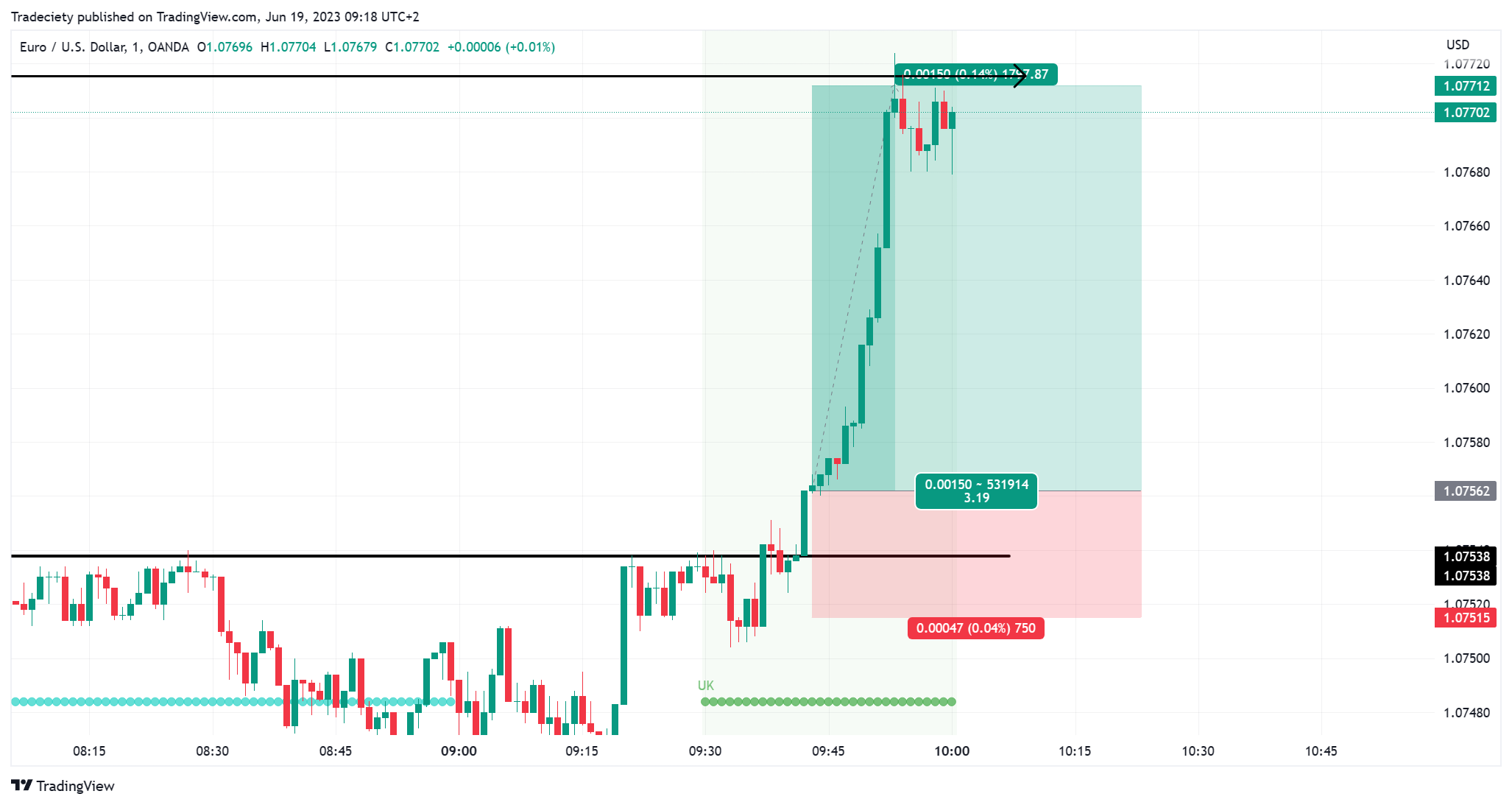Did you know that the average day trader spends more time analyzing charts than some people spend on their morning coffee? Choosing the right day trading style is crucial for success, and this article dives into essential factors to consider. You'll explore various day trading styles, from scalping to momentum trading, and learn how to assess your risk tolerance and time commitment. Understanding how personality influences trading choices and the importance of market research will empower you to find a style that suits you best. With insights on testing different approaches and the significance of emotional discipline, DayTradingBusiness is here to guide you in adapting your strategy for long-term success.
What are the different day trading styles?
The main day trading styles are:
1. Scalping: Quick trades for small profits, often holding positions for seconds to minutes.
2. Momentum Trading: Buying stocks that are trending strongly, holding for a few minutes to hours.
3. Swing Trading: Holding positions for several days to capitalize on expected price moves.
4. News Trading: Making trades based on news events or earnings reports, usually short-term.
5. Range Trading: Identifying levels of support and resistance and trading within that range.
Choose a style that aligns with your risk tolerance, time availability, and personality.
How do I determine my risk tolerance for day trading?
To determine your risk tolerance for day trading, assess your financial situation, investment goals, and emotional resilience. Start by evaluating how much capital you can afford to lose without affecting your lifestyle. Next, consider your experience level and how comfortable you feel with potential losses. Reflect on past experiences with risk in other investments. Finally, test different trading strategies with a demo account to gauge your reactions to market fluctuations. This will help you find a day trading style that aligns with your risk tolerance.
What factors should I consider when choosing a day trading style?
Consider your risk tolerance, time availability, and personality. Look at your financial goals—are you aiming for quick profits or consistent returns? Assess your preferred trading instruments, like stocks or forex. Evaluate how much time you can dedicate daily; some styles require constant monitoring. Lastly, think about your decision-making process—do you prefer technical analysis, news-driven trades, or a mix?
How does my personality affect my day trading style?
Your personality significantly influences your day trading style. If you're risk-averse, you might prefer a conservative approach, focusing on low-volatility stocks and long-term trends. Conversely, if you thrive on excitement and quick decisions, you may gravitate toward aggressive strategies like scalping or momentum trading.
Your patience level also matters; patient traders might excel in swing trading, while impulsive individuals may chase rapid trades. Additionally, your emotional resilience can dictate how well you handle losses and stress, impacting your overall trading performance. Ultimately, aligning your trading style with your personality enhances your chances of success and satisfaction in day trading.
What is scalping in day trading, and is it right for me?
Scalping in day trading is a strategy that involves making numerous quick trades to profit from small price changes throughout the day. It requires a keen eye for market movements, fast decision-making, and often heavy reliance on technical analysis.
Whether scalping is right for you depends on your personality and trading style. If you thrive under pressure, can commit to monitoring the markets closely, and are comfortable with rapid trades, scalping may suit you. However, if you prefer a more relaxed approach or lack the time to focus intensely on trades, consider other day trading styles like swing trading or position trading.
How do I identify if swing trading suits my lifestyle?

To determine if swing trading suits your lifestyle, consider your time availability and risk tolerance. If you can commit a few hours a week to analyze charts and manage trades, swing trading might be a good fit. Assess your ability to handle market fluctuations without constant monitoring. If you prefer a flexible schedule and can withstand holding positions for days or weeks, swing trading aligns well with your lifestyle. Reflect on your emotional resilience; if you can stay calm during market ups and downs, you’re likely suited for it.
What is momentum trading, and how can I apply it?
Momentum trading involves buying stocks that are trending upward and selling those that are trending downward, capitalizing on the momentum of price movements. To apply it, identify stocks with strong recent performance, analyze volume trends, and set entry and exit points based on your risk tolerance. Use technical indicators like moving averages and the Relative Strength Index (RSI) to confirm trends. Lastly, remain disciplined with your strategy to manage risk effectively.
How can I assess my time commitment for day trading?
To assess your time commitment for day trading, start by determining how many hours you can realistically dedicate each day. Consider your current job, personal obligations, and when the markets are most active. Next, evaluate your trading style: scalping requires more time than swing trading. Monitor your performance and adjust your schedule based on your results. Lastly, ensure you have a trading plan that aligns with your available time, allowing for consistent analysis and execution.
What tools do I need for effective day trading?
For effective day trading, you'll need a reliable trading platform, a fast internet connection, real-time market data services, and advanced charting tools. Essential tools also include a stock screener to identify trading opportunities, risk management software, and a good set of analytical tools for technical analysis. Lastly, consider using news feeds to stay updated on market-moving events.
How important is market research for my trading style?
Market research is crucial for your trading style. It helps you understand market trends, identify opportunities, and assess risks. Without it, you’re trading blind, which can lead to significant losses. Tailoring your day trading style requires knowledge of market dynamics, and research provides the insights needed to make informed decisions. It also helps you refine your strategy based on real data, enhancing your chances for success.
What are the common strategies within each day trading style?

Common strategies within day trading styles include:
1. Scalping: Focus on making small profits from numerous trades throughout the day. Traders execute quick buy and sell orders, often holding positions for seconds to minutes.
2. Momentum Trading: Traders identify stocks moving significantly in one direction on high volume. They buy early and sell when momentum starts to fade.
3. Swing Trading: Although typically a longer-term style, some day traders use swing principles by holding positions for several days or hours based on short-term price movements.
4. News Trading: Traders capitalize on volatility caused by news events. They quickly buy or sell based on earnings reports, economic data releases, or other significant news.
5. Range Trading: This strategy involves identifying support and resistance levels. Traders buy at support and sell at resistance, taking advantage of price fluctuations within a defined range.
Choose a style that aligns with your personality, risk tolerance, and market understanding.
Learn about Common Mistakes in Day Trading Momentum Strategies
How Can You Identify the Best Day Trading Style for Your Needs?
Day trading is the buying and selling of financial instruments within the same trading day, aiming to capitalize on short-term price movements. To choose a day trading style that fits you, assess your risk tolerance, time commitment, and trading strategy preferences, such as scalping, momentum trading, or range trading.
Learn more about: What is Day Trading?
Learn about How to Identify Reversal Patterns in Day Trading
How can I test different day trading styles before committing?

To test different day trading styles before committing, start by simulating trades using a demo account. Focus on various styles like scalping, momentum trading, and swing trading. Track your performance and analyze which methods resonate with your skills and risk tolerance. Participate in online trading communities to gain insights and feedback. Additionally, keep a trading journal to record your strategies and emotions during trades. This will help you refine your approach and identify what works best for you.
What role does emotional discipline play in day trading?
Emotional discipline is crucial in day trading because it helps traders manage stress, avoid impulsive decisions, and stick to their strategy. Maintaining emotional control prevents overtrading and allows for objective analysis of market conditions. It enables traders to accept losses without revenge trading and to capitalize on gains without becoming overly greedy. Ultimately, emotional discipline fosters consistency and enhances overall trading performance.
How do successful traders choose their trading styles?
Successful traders choose their trading styles by assessing their risk tolerance, time commitment, and personality traits. They evaluate different styles, such as scalping, momentum trading, or swing trading, based on how quickly they want to enter and exit trades. Traders often start by paper trading to test strategies without financial risk. Analyzing past performance and adapting to market conditions also helps them refine their approach. Ultimately, they select a style that aligns with their goals and lifestyle.
What are the risks associated with different day trading styles?
Scalping risks include high transaction costs and rapid losses due to market volatility. Momentum trading can lead to significant losses if trends reverse unexpectedly. Swing trading may face overnight gaps that affect positions adversely. Range trading risks involve false breakouts that can quickly deplete capital. Each style demands strict risk management and adaptability to market changes. Choose a style that matches your risk tolerance and trading skills to minimize potential losses.
How can I adapt my trading style over time?
To adapt your trading style over time, start by assessing your performance regularly. Identify what strategies work best for you and which don’t. Experiment with different day trading styles, such as scalping, momentum trading, or swing trading, to see what aligns with your personality and risk tolerance.
Stay informed about market trends and adjust your approach accordingly. Set clear goals and refine your strategies based on your evolving experience. Keep a trading journal to track your decisions and outcomes, allowing for continuous improvement. Lastly, be flexible and willing to pivot as market conditions change.
Conclusion about How to Choose a Day Trading Style that Fits You
In conclusion, selecting the right day trading style is crucial for your success in the market. By understanding various styles like scalping, swing trading, and momentum trading, you can align your approach with your risk tolerance, personality, and lifestyle. Assessing your time commitment and utilizing effective tools will further enhance your trading journey. Remember, emotional discipline and ongoing market research are vital. As you explore and adapt your strategies, seek guidance and insights from DayTradingBusiness to refine your skills and achieve your trading goals.
Learn about How to Choose Stocks for Day Trading Scalping